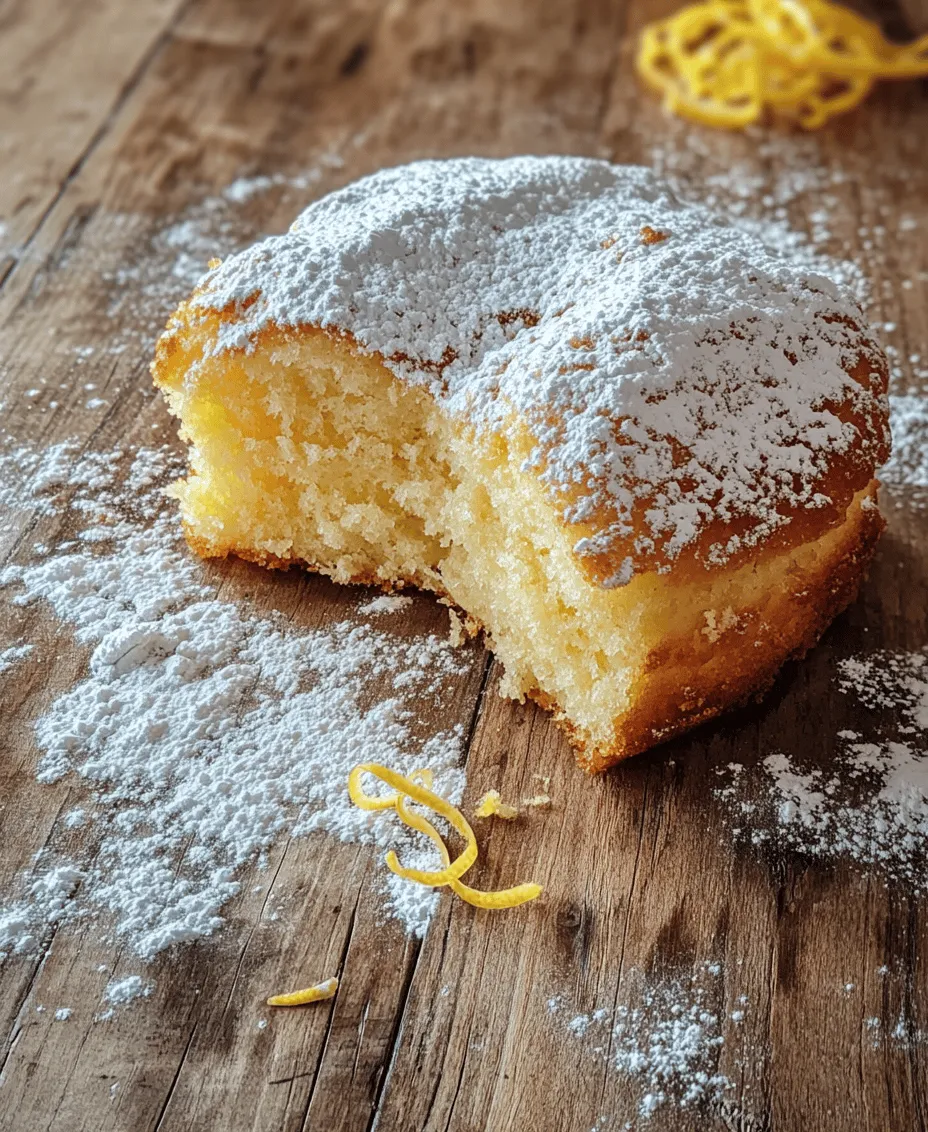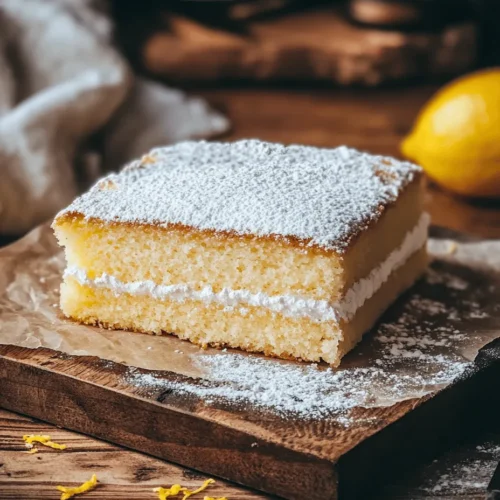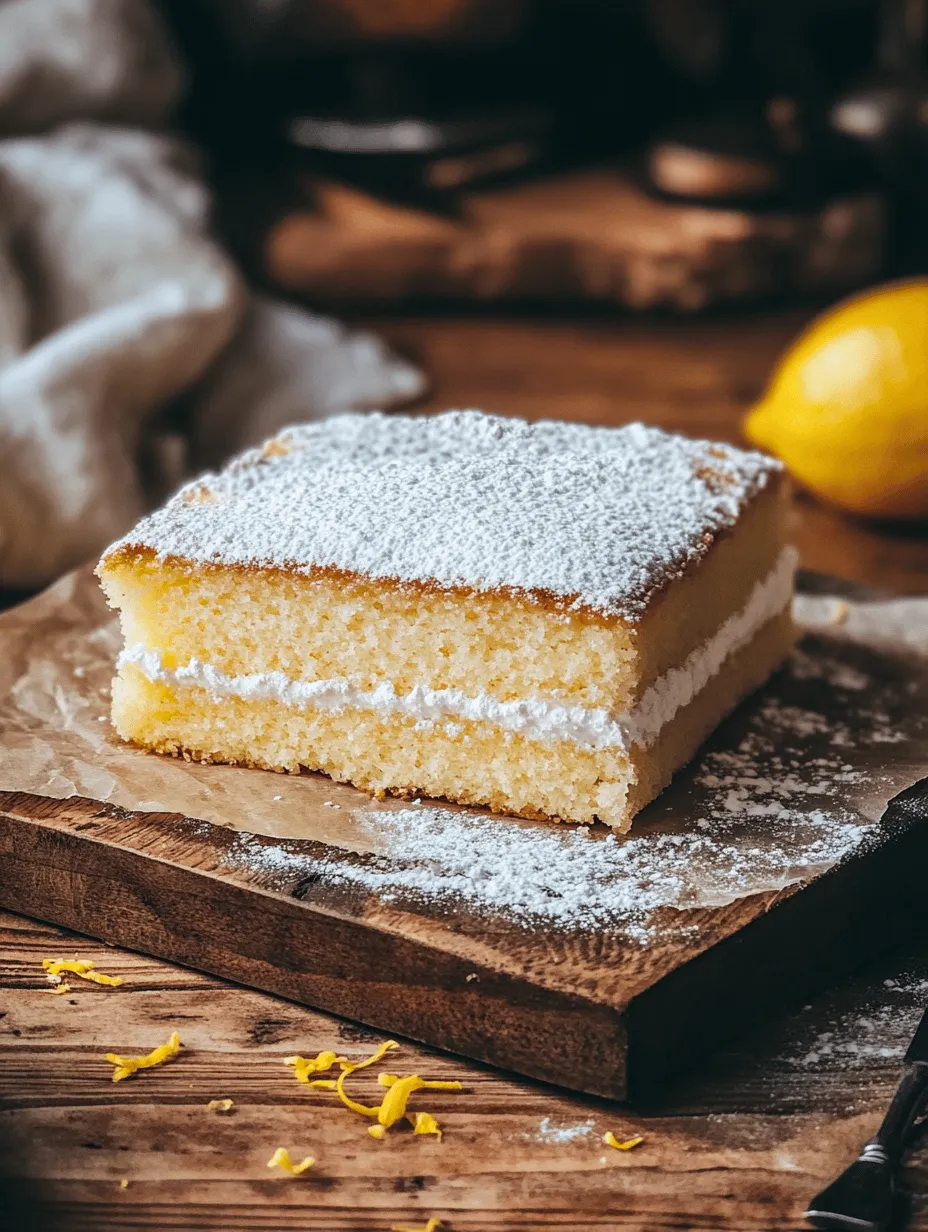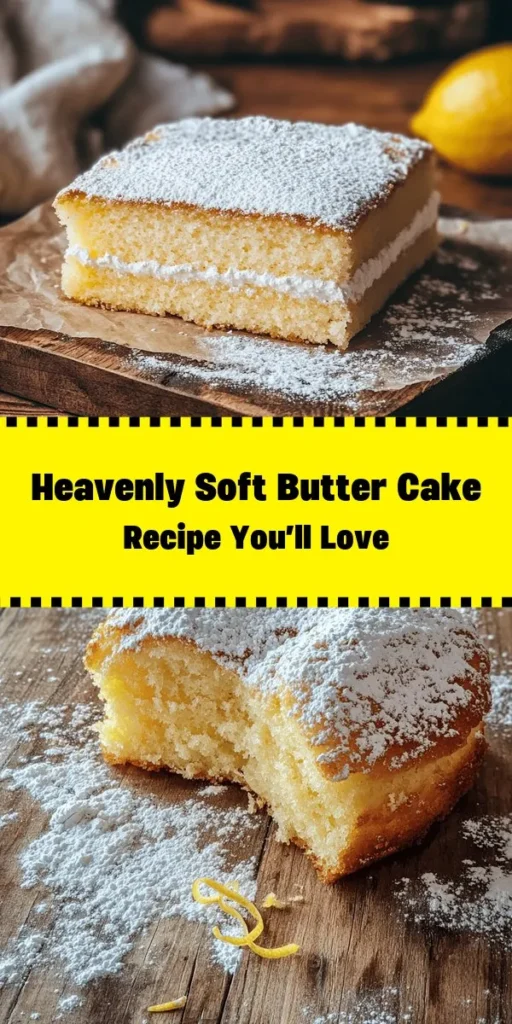Introduction
There’s something undeniably comforting about a slice of soft butter cake. This classic dessert, with its rich flavor and inviting aroma, has a special place in many hearts. The allure of a soft butter cake lies not only in its taste but also in its texture — a well-made butter cake should be light, fluffy, and irresistibly moist. Whether enjoyed with a cup of tea or served as the centerpiece of a celebration, a cloud-like soft butter cake brings joy with each bite.
In the world of baking, texture and flavor are paramount. A cake that strikes the perfect balance between these two elements makes for an unforgettable experience. As you delve into the art of baking this delightful treat, prepare to discover how the right combination of ingredients can transform a simple cake into a cloud-like masterpiece. Join me on this culinary journey to create a butter cake that will not only satisfy your sweet tooth but also delight your palate.
The Essence of a Cloud-like Soft Butter Cake
To truly appreciate a cloud-like soft butter cake, it’s essential to understand the characteristics that define its perfection. At its core, a butter cake should exhibit a tender crumb that melts in your mouth, a fluffy texture that seems to float on air, and a moistness that keeps you coming back for more. These qualities are achieved through careful attention to the ingredients and the baking process.
Understanding the Characteristics of a Perfect Butter Cake
A perfect butter cake is a harmonious blend of flavor, moisture, and texture. The cake should be light enough to feel airy yet rich enough to satisfy. The key to achieving this balance lies in the science of baking — specifically, how ingredients interact with each other during the mixing and baking processes.
Quality ingredients play a crucial role in creating the ideal butter cake. Using fresh, high-quality components not only enhances the flavor but also contributes to the cake’s overall texture. Each ingredient serves a specific purpose, and understanding this will help you appreciate the intricacies of baking.
The Significance of Using Quality Ingredients
When it comes to baking, the quality of your ingredients can make all the difference. For a cloud-like soft butter cake, each component contributes to the final product in unique ways. By selecting the best ingredients, you ensure that your cake will have a rich flavor and a tender crumb.
For instance, using unsalted butter gives you control over the salt content, allowing you to better balance the sweetness of your cake. Fresh eggs contribute to the cake’s aeration, while high-quality vanilla extract enhances the overall flavor profile. Paying attention to ingredient quality will elevate your baking and bring your cake to new heights.
The Texture Profile: Light, Fluffy, and Moist
A cloud-like soft butter cake should embody three distinct texture qualities: lightness, fluffiness, and moisture. Achieving this trifecta requires a thoughtful approach to mixing and baking. The incorporation of air into the batter is essential for creating that light and fluffy texture.
Proper creaming of the butter and sugar is one of the most critical steps in this process. This technique introduces air into the mixture, leading to a cake that rises beautifully in the oven. Additionally, ensuring that your ingredients are at room temperature allows for better emulsification, contributing to a uniform batter that bakes evenly.
Moisture is another vital element. A well-balanced ratio of ingredients, along with the inclusion of whole milk, ensures that your cake does not dry out during baking. The result is a soft butter cake that is not only delicious but also has a texture that is simply heavenly.
Ingredients Breakdown
Now that we’ve explored the essence of a cloud-like soft butter cake, let’s dive into the ingredients that make this recipe so special. Each component plays a pivotal role in achieving the desired flavor and texture, and understanding their functions will enhance your baking experience.
Unsalted Butter
Butter is the star ingredient of any butter cake, and for this recipe, unsalted butter is preferred. Using unsalted butter allows you to control the salt content of your cake, ensuring a balanced flavor. Additionally, high-quality butter contributes to the rich taste and moist texture of the cake. It’s essential to use butter that is at room temperature for easier creaming, which will help incorporate air into the batter.
Granulated Sugar
Sugar is not just a sweetener; it also affects the texture of the cake. Granulated sugar helps to create a light and airy structure when creamed with butter. As the sugar crystals cut through the fat, they create tiny air pockets that expand during baking, leading to a fluffy cake. Moreover, sugar adds moisture and enhances the overall flavor, making it an indispensable ingredient in our cloud-like soft butter cake.
Eggs
Eggs serve as the binding agent in this recipe, bringing all the ingredients together. They also play a crucial role in aeration, as the proteins in eggs provide structure to the cake. When beaten, eggs incorporate air into the batter, contributing to the cake’s lightness. For best results, use large eggs at room temperature, as they will mix more easily and evenly with the other ingredients.
Vanilla Extract
Vanilla extract is the secret weapon in many baking recipes, and this cloud-like soft butter cake is no exception. It enhances the cake’s flavor complexity, adding warmth and depth that elevate the overall taste. Using pure vanilla extract rather than imitation vanilla is recommended for the best flavor outcome. A touch of vanilla can transform an ordinary cake into a delightful dessert that tantalizes the taste buds.
All-Purpose Flour
All-purpose flour is the foundation of our cake, providing structure and stability. The protein content in flour is what allows our cake to rise and hold its shape. When measuring flour, it’s important to avoid packing it into the measuring cup, as this can lead to a dense cake. Instead, spoon the flour into the cup and level it off for accurate measurement. This will ensure the right balance of flour to liquid, contributing to the fluffy texture we desire.
Baking Powder
Baking powder is the leavening agent responsible for the cake’s rise and fluffiness. It contains a combination of acids and bases that react when moistened and heated, producing carbon dioxide bubbles that cause the cake to expand. Using the right amount of baking powder is crucial; too little will result in a dense cake, while too much can lead to a cake that rises too quickly and then collapses.
Salt
Though it may seem counterintuitive to add salt to a sweet cake, it serves an important role in balancing flavors. Salt enhances the sweetness of the sugar and helps to highlight the other flavors in the cake. It also strengthens the batter, contributing to a better texture. Just a pinch of salt can make a significant difference in the overall flavor profile of your cloud-like soft butter cake.
Whole Milk
Whole milk adds moisture and richness to the cake, ensuring it remains soft and tender. The fat content in whole milk helps to create a luscious crumb and enhances the cake’s flavor. For the best results, use milk that is at room temperature to facilitate easier mixing with the other ingredients.
Lemon Zest (Optional)
While lemon zest is an optional ingredient, it can add a delightful brightness to the flavor of your butter cake. The citrus notes enhance the overall taste and provide a refreshing contrast to the richness of the butter. If you choose to include lemon zest, make sure to use fresh lemons for the best flavor.
Preparation Steps in Detail
Now that we have a solid understanding of the ingredients and their roles, let’s move on to the preparation steps. Baking a cloud-like soft butter cake is a rewarding experience that begins with careful preparation. Follow these detailed steps to ensure your cake turns out perfectly every time.
1. Preheat the Oven: Start by preheating your oven to 350°F (175°C). This step is crucial, as a preheated oven ensures even baking and helps the cake rise properly.
2. Prepare the Baking Pan: Grease and flour a round cake pan (usually 9 inches in diameter) or line it with parchment paper. This prevents the cake from sticking and allows for easy removal once it’s baked.
3. Cream the Butter and Sugar: In a mixing bowl, combine the room temperature unsalted butter and granulated sugar. Using an electric mixer, cream them together on medium speed until the mixture is light and fluffy, typically around 3-5 minutes. This process is essential for incorporating air into the batter, which contributes to the cake’s light texture.
4. Add Eggs One at a Time: Once the butter and sugar are well creamed, add the eggs one at a time, beating well after each addition. This ensures that the eggs are fully incorporated, helping to aerate the batter further.
5. Incorporate Vanilla Extract: After the eggs are well mixed in, add the vanilla extract to the batter and mix until combined. This will enhance the flavor of your cake.
6. Combine Dry Ingredients: In a separate bowl, whisk together the all-purpose flour, baking powder, and salt. This step ensures that the leavening agent is evenly distributed throughout the flour, promoting consistent rising.
7. Alternate Adding Dry Ingredients and Milk: Gradually add the dry ingredient mixture to the butter mixture, alternating with the whole milk. Start and end with the flour mixture, mixing just until combined after each addition. Be careful not to overmix, as this can lead to a dense cake.
8. Fold in Lemon Zest (Optional): If you are using lemon zest, gently fold it into the batter using a spatula. This will infuse the cake with a refreshing citrus flavor without overworking the batter.
9. Pour Batter into the Prepared Pan: Once the batter is fully combined, pour it into the prepared cake pan. Use a spatula to spread it evenly, smoothing the top for an even bake.
10. Bake the Cake: Place the cake pan in the preheated oven and bake for 25-30 minutes, or until a toothpick inserted into the center comes out clean. Keep an eye on the cake during the last few minutes of baking to prevent overbaking.
11. Cool the Cake: Once baked, remove the cake from the oven and allow it to cool in the pan for about 10 minutes. Then, carefully transfer it to a wire rack to cool completely. Cooling is essential for achieving the perfect texture, as it allows the cake to set.
By following these steps meticulously, you’ll be on your way to creating a cloud-like soft butter cake that’s sure to impress. Each action contributes to the cake’s final texture and flavor, ensuring that your baking experience is both enjoyable and rewarding. In the next part of this series, we’ll delve into tips for achieving the best results and answer some common questions related to this delightful recipe. Stay tuned for more insights that will take your baking skills to the next level!

Preheating the Oven: Importance of Temperature for Even Baking
Preheating your oven is a crucial step in baking a cloud-like soft butter cake. The ideal temperature for this cake is typically around 325°F (163°C). Preheating ensures that the cake bakes evenly, allowing it to rise properly and develop that sought-after soft, airy texture. A well-preheated oven helps to create a consistent environment, crucial for the cake’s structure as it bakes. If you place the batter in a cold oven, the cake may not rise as expected, resulting in a dense, heavy texture instead of the light, fluffy one characteristic of a great butter cake.
Creaming Butter and Sugar: Techniques for Achieving the Right Texture
The next step involves creaming the butter and sugar together, which is fundamental in creating the cake’s light texture. Start with softened unsalted butter—this should be at room temperature and yield to light pressure when touched. Using a stand mixer or a hand mixer, beat the butter on medium speed until it becomes pale and fluffy. This process incorporates air into the mixture, which is essential for achieving that cloud-like quality. Depending on your mixer, this can take anywhere from 3 to 5 minutes.
Add the granulated sugar gradually, allowing it to blend into the butter fully. Continue beating until the mixture is light and creamy. The key here is patience; don’t rush this step as it significantly impacts the cake’s overall fluffiness.
Incorporating Eggs and Vanilla: Tips for Proper Mixing to Maintain Fluffiness
Once the butter and sugar are creamed together, it’s time to incorporate the eggs and vanilla extract. Adding the eggs one at a time helps maintain the emulsion, ensuring a uniform batter. Beat each egg into the mixture until fully incorporated before adding the next. This gradual addition prevents the mixture from curdling, which can affect the cake’s texture.
After the eggs are fully mixed in, pour in the vanilla extract. This not only adds flavor but also contributes to the overall moisture of the cake. Mix on low speed to combine, ensuring you do not overbeat, as this can lead to a dense cake.
Mixing Dry Ingredients: Importance of Sifting and How It Affects Cake Texture
While the wet ingredients are coming together, prepare the dry ingredients. In a separate bowl, sift together all-purpose flour, baking powder, and a touch of salt. Sifting is more than just a step; it aerates the flour, breaking up any clumps and ensuring that the leavening agents are evenly distributed. This step is particularly important for a soft butter cake, as it promotes even rising and a tender crumb.
Combining Mixtures: Techniques to Avoid Overmixing and Maintain Aeration
Once your dry ingredients are ready, it’s time to combine them with the wet mixture. Begin by adding the flour mixture to the butter-egg mixture in three increments, alternating with milk. Start and end with the flour, mixing on low speed just until combined. It’s vital not to overmix at this stage; overmixing can develop gluten, leading to a tougher cake. The batter should be just combined, with a few small lumps remaining. This technique preserves the air bubbles created during the creaming process, contributing to the cake’s lightness.
Baking the Cake: Signs of Doneness and Adjusting Baking Times
With the batter ready, pour it into a prepared cake pan, smoothing the top with a spatula. Bake in the preheated oven for about 25 to 30 minutes. To check for doneness, insert a toothpick into the center of the cake. If it comes out clean or with a few moist crumbs, the cake is done. Be cautious, as baking times may vary depending on your oven’s calibration and the size of the cake pan. If the edges start to pull away from the pan, that’s another good sign that your cake is ready.
Cooling and Serving: Best Practices for Cooling and Presentation
Once the cake is baked, remove it from the oven and let it cool in the pan for about 10 minutes. This allows the cake to set and makes it easier to remove from the pan without breaking. After cooling slightly, turn it out onto a wire rack to cool completely. This step is essential, as allowing the cake to cool too long in the pan can lead to a soggy bottom.
For presentation, once cooled, you can dust the cake with powdered sugar, or serve it with a dollop of whipped cream and fresh fruits. The light color of the cake is a perfect canvas for garnishes, making it visually appealing.
Serving Suggestions
When it comes to serving your cloud-like soft butter cake, there are numerous possibilities:
– Plain or Garnished: The cake can be enjoyed plain, showcasing its soft texture and buttery flavor, or garnished with fresh berries, whipped cream, or a drizzle of chocolate sauce for added decadence.
– Pairing Suggestions: This cake pairs beautifully with various beverages, such as a light tea, coffee, or even a glass of milk. For an elegant touch, consider serving it with a sparkling beverage or dessert wine.
– Variations: To explore different flavors, consider adding ingredients like chocolate chips, nuts, or citrus zest to the batter. A few tablespoons of cocoa powder can transform it into a delightful chocolate butter cake, or adding lemon zest can give it a refreshing citrus twist.
The Science Behind the Recipe
Understanding the science behind each step can significantly enhance your baking skills:
– Temperature Role: The temperature of your butter should be soft, not melted, to create the ideal creaming environment. Cold butter won’t trap air effectively, while melted butter can lead to a greasy batter.
– Why Overmixing Ruins Fluffiness: When you mix too much after adding flour, gluten develops and can create a dense cake. This is why combining the ingredients until just incorporated is essential for maintaining that light texture.
Cultural and Historical Context
Butter cakes have a long and storied history, tracing back to Europe in the 19th century when baking powder was introduced. These cakes quickly became a staple in many cultures, often associated with celebrations and gatherings. In various cultures, cakes symbolize good fortune, joy, and togetherness, making them an important part of birthday parties, weddings, and holidays.
Conclusion
The cloud-like soft butter cake stands out for its delicate, airy texture and rich buttery flavor. This recipe not only delivers a delightful treat but also offers a chance to hone your baking skills. Whether you enjoy it plain or dress it up with toppings and accompaniments, this cake is sure to impress.
Baking is a joyful experience, bringing warmth and comfort into your kitchen. With this recipe, you’re encouraged to embrace the art of baking, share your creations with loved ones, and savor the satisfaction of crafting something truly special from scratch. The pleasure derived from homemade treats is unmatched, and this cloud-like soft butter cake is a perfect way to celebrate the joy of baking. Enjoy your baking adventure!



